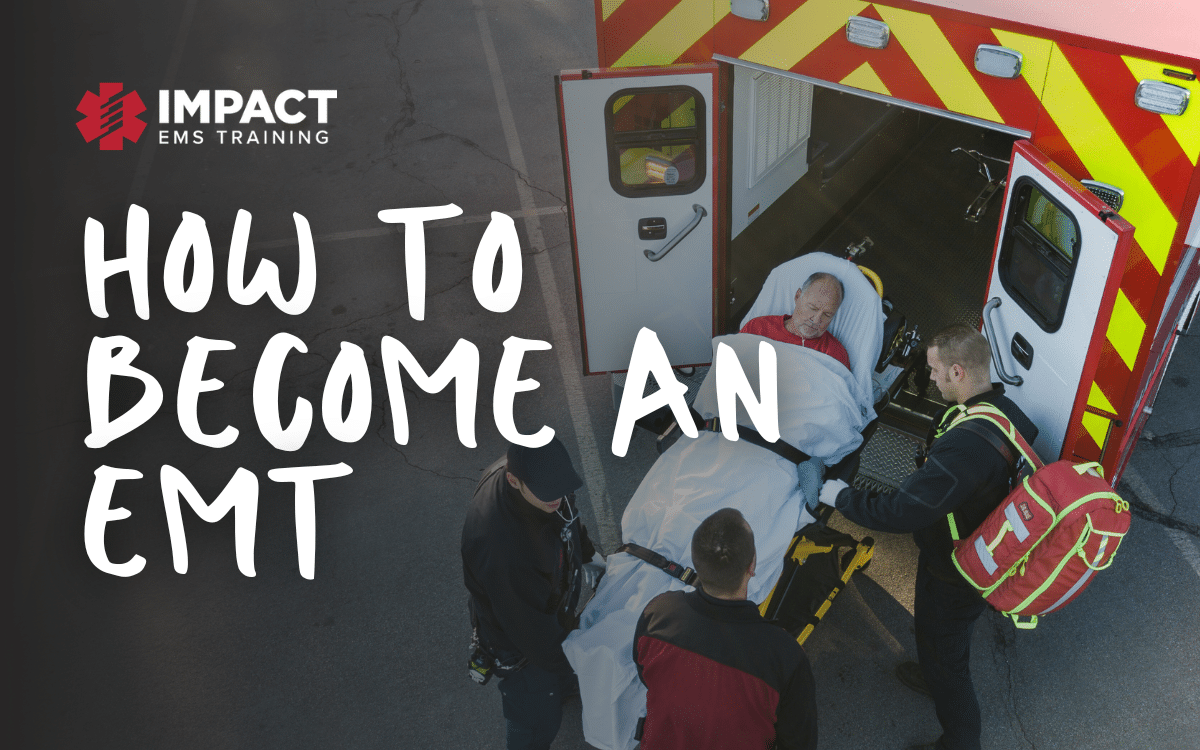Background: It has been common practice in trauma to place patients in cervical collars and on long backboards (LBBs) to achieve spinal immobilization. LBBs are used to help prevent spinal movement and facilitate the extrication of patients. Cervical collars (C-Collars) are used to help prevent movement of the cervical spine and often are combined with lateral head blocks and straps. The theory behind this is that spine immobilization prevents secondary spinal cord injury during extrication, transport, and evaluation of trauma patients by minimizing movement.
Most of this information has been passed on from historical teachings, like the Advanced Trauma Life Support (ATLS) courses, and not from scientific research. To date, there have been no high-quality evidence that the use of spinal immobilization improves patient outcomes. In this post, we will review the evidence associated with spinal immobilization in trauma patients.
Spinal Immobilization Does NOT Help Immobilize the Cervical Spine [5]
This was a randomized, controlled crossover trial of healthy volunteer subjects who were randomly assigned to either a long backboard (LBB) or stretcher mattress. All subjects were fitted with a rigid cervical collar and secured to an assigned device (including foam head blocks). Patients were driven on a course at <20mph with lasers affixed to a scaffold for lateral movement measurements of the head, chest, and hip. The primary outcome of the study was the amount of lateral movement.
Results:
- Lateral Movement at Head:
- LSB: 0.97 +/- 0.7cm
- Stretcher Mattress: 0.46 +/- 0.4cm
- Lateral Movement at Chest:
- LSB: 2.22 +/- 1.4cm
- Stretcher Mattress: 1.22 +/- 0.9cm
- Lateral Movement at Hips:
- LSB: 1.88 +/- 1.2cm
- Stretcher Mattress: 1.20 +/- 0.9cm
Discussion:
- Important to remember this was not a clinical study. Healthy volunteers are less likely to self-splint due to lack of injury, unlike trauma patients. Additionally, it is unclear, how much movement is clinically relevant
- LSB allowed 0.8cm greater mean lateral motion for all measurements in aggregate than did the stretcher mattress alone
- The amount of movement from each patient as a function of BMI revealed a direct correlation of increased movement with increased BMI
- No statistical differences in pain or anxiety after completion of the study with LSB or stretcher mattress alone
Clinical Take Home Point: This study confirms that long spine board immobilization does not limit lateral movement, however, the clinical correlation to possible spine movement and neurologic outcomes cannot be evaluated based on this trial alone.
Spinal Immobilization Does NOT Decrease Rates of Spinal Cord Injury [6]
This was a 5-year retrospective chart review of all patients admitted to an inpatient service or ED with spinal or spinal cord injuries at 2 hospitals (one in Malaysia and one in New Mexico). Patients in the Malaysian cohort were not immobilized while patients in the New Mexico cohort were immobilized.
As for the main outcomes, neurologic injury was separated into two categories: Neurologic injury with disability or no neurologic injury. All patients with blunt injuries to the spine or spinal cord that were transported from the injury scene to the study hospital were included.
Results:
- All patients with acute blunt traumatic spinal or spinal cord injuries
- 0/120 patients had spinal immobilization at Malaysian Hospital
- 334/334 patients had spinal immobilization at New Mexico Hospital
- Neurologic Injury with Disability:
- US Hospital: 21%
- Malaysian Hospital: 11%
- Less neurologic disability in in the non-immobilized Malaysian patients (OR 2.03; 95% CI 1.03 – 3.99; p = 0.04)
- Results similar when analysis limited to patients with cervical injuries (OR 1.52; 95% CI 0.64 – 3.62; p = 0.34)
Discussion:
- Anatomic distribution of injuries were similar at the 2 hospitals as well as what is found in the literature
- Patients in Malaysia more likely to be injured from a fall rather than an MVC
- Patients who died at injury site or during transport excluded
- No matching of patients for severity of non-spinal injuries
- Severity and instability of spine injuries may not have been equal between the two sites
- Number of patients available for comparison are rather small
Clinical Take Home Point: Acute spinal immobilization may not have benefit for the prevention of neurologic deterioration from unstable spinal fractures
Spinal Immobilization Increases the Difficulty of Airway Management [7]
This was a randomized, open-label cross-over study of 70 healthy adult patients with normal airways intubated using the Airtraq with and without a rigid cervical collar. Multiple outcomes were assessed including, ease of insertion of Airtraq into the oral cavity, intubation time, intubation difficulty score, and ease of intubation via a visual analogue scale.
Results:
- 70 patients enrolled
- 2 patients were excluded due to difficult mask ventilation
- 3 patients refused to participate
- 65 patients included in the study
- Ease of insertion of airtraq into oral cavity was more difficult with a cervical collar
- Likert Score of -2:
- Cervical Collar: 10.8%
- No Cervical Collar: 1.5%
- Likert Score of -1:
- Cervical Collar: 44.6%
- No Cervical Collar: 23.1%
- Airway Trauma:
- Cervical Collar: 7.6%
- No Cervical Collar: 1.5%
- Failure to Intubate
- Cervical Collar: 3%
- No Cervical Collar: 0%
- Intubation Time:
- Cervical Collar: 30.0sec
- No Cervical Collar 26.9sec
- Median Visual Analogue Scale for Ease of Intubation:
- Cervical Collar: 3
- No Cervical Collar: 2
- Need for Additional Manuevers (i.e. Use of Bougie):
- Cervical Collar: 18.5%
- No Cervical Collar: 6.2%
- Likert Score of -2:
Discussion:
- Intubations requiring more than one attempt were excluded from the analysis for intubation time
- Open labeled design may have created bias (i.e. hard to conceal collar vs no collar)
- Unclear if difficulty in intubation was specific to the Airtraq or if this would be the case with other tools for intubation
Clinical Take Home Point: Tracheal intubation is more difficult, takes a longer time, and requires more maneuvers for success when a cervical collar is applied.
Spinal Immobilization Can Cause Pressure Ulcers [1]
This was a systematic review of studies from 1970 to September 2011 with multiple databases reviewing the development of pressure ulcers with spinal immobilization. The main outcomes assessed included the occurrence of pressure ulcers, the severity of pressure ulcers, risk factors for pressure ulcers, and preventive interventions of pressure ulcers.
Results:
- Total of 998 Studies Reviewed
- 13 Studies (1,180 patients) were included in a systematic review
- Incidence of collar-related Pressure Ulcers:
- NO studies described the occurrence of pressure ulcers related to the application of backboards and vacuum mattresses, BUT there was a significant increase in pain
- 4 studies described the occurrence of pressure ulcers related to the application of C-spine immobilization with C-Collars (Incidence of Pressure Ulcers: 6.8 – 38%)
- NO studies evaluated the use of lateral head blocks on tissue interface pressure (TIP)
- Locations of Pressure Ulcers: Occiput, Chin, Clavicle, and Shoulders
- Severity of Pressure Ulcers: Stages 1 – 4
- Risk Factors for Pressure Ulcers:
- High Pressure
- Pain from Immobilizing Devices
- Length of Time in/on Device
- Intensive Care Unit Admission
- High Injury Severity Scores (ISSs)
- Mechanical Ventilation
- Intracranial Pressure Monitoring
- Preventive Interventions for Collar-Related Pressure Ulcers
- Early Replacement of the Extrication Collar
- Regular Skin Assessment
- Collar Refitting every 4 – 8 hours
- Position Change
Discussion:
- Just over half (7/13) of studies were considered high-quality studies. The remaining 6/13 were considered “average” quality studies.
- Meta-analysis of results was not feasible due to the wide variations in design and variables assessed
- 9/13 studies did not perform power calculations and may have had insufficient sample sizes to detect an effect
- 5/13 studies did not describe the reliability and validity of applied instruments to measure tissue interface pressure (TIP)
- 5/8 studies with crossover design did not describe washout times. Short or no washout times may influence the observations of the next treatment by the previous treatment
- 5 studies included were from 15 years ago. The devices we are using today may not generalize to these studies
- Of the 13 studies, only 4 were clinical studies on C-collar related pressure ulcers in trauma patients
- Length of time in immobilization seems to be the biggest risk factor for pressure ulcer development.
- Perfusion and oxygenation of tissues are significantly decreased in trauma patients with higher severity of illness (i.e. ICU admission, mechanical ventilation, high ISSs, and ICP monitoring). This is also a risk factor for the development of pressure ulcers.
- Pain and discomfort were clinical indicators of increased tissue pressure from the immobilization devices. In addition, pain can bias clinical evaluation, which results in prolonged immobilization due to imaging delays.
Clinical Take Home Point: Spinal immobilization can cause the development of pressure ulcers. Extrication backboards should be removed as soon as possible to prevent prolonged times on hard surfaces. The time of rigid/semi-rigid C-collar devices should also be minimized by standardizing the procedure for C-collar clearance (i.e. NEXUS or Canadian C-spine rules).
If patients require prolonged C-collar time, the rigid/semi-rigid extrication collars should be exchanged out for more comfortable soft collar devices.
Spinal Immobilization Changes the Physical Exam [2]
This was a single-blinded, prospective study to determine if spinal immobilization causes changes in physical exam findings over time. Twenty healthy volunteers without previous back pain or injures were fully immobilized for one hour, with a cervical collar and strapped to a long wooden backboard. Midline palpation of vertebrae was performed every 10 minutes up to an hour. The main outcomes of the study were the number of patients reporting pain on palpation and the location of the pain.
Results:
- 20 Consecutive Volunteers
- Time 0 Min: 0/20 with pain on palpation
- Time 40 Min: 3/20 with pain on palpation
- Time 60 Min: 5/20 with pain on palpation
- 18/20 patients reported increased discomfort over 60 minutes
- Median initial pain was 1/10
- Median pain at 60 min was 4/10
- Location of pain at 60 min was identified at C7, L2, and L3
Discussion:
- Only one patient developed point tenderness in <30 minutes, therefore rapid evaluation of patients on initial arrival to the ED may decrease the incidence of induced vertebral point tenderness
- Another option is to have protocols in place for emergency medical service providers to clinically clear patients in the field and prevent spinal immobilization altogether
Clinical Take Home Point: Prolonged spinal immobilization (>30min) can increase the rate of midline spine tenderness, likely resulting in unnecessary health care costs due to radiologic evaluations.
Spinal Immobilization Worsens Pulmonary Function [3]
This was an unblinded, randomized, crossover laboratory study of 39 volunteers ranging from age 7 to 85 years. Respiratory function, via spirometry, was measured 3 times at baseline (seated or lying), immobilized with a Philadelphia collar on a wooden backboard, and on a Scandinavian vacuum mattress with a vacuum collar. The primary outcomes were spirometry results and patient comfort.
Results:
- 39 total volunteers
- Children: n = 11 (Age Ranges 7 – 12 years)
- Young Adults: n = 11 (Age Ranges 22 – 32 years)
- Elderly: n = 17 (All >60 years)
- Forced Vital Capacity (FVC)
- Baseline: 2.72L
- Wooden Board: 2.34L
- Vacuum Mattress 2.33L
- Forced Expiratory Volume in 1 Sec (FEV1)
- Baseline: 2.26L
- Wooden Board 1.94L
- Vacuum Mattress: 1.83L
- Patient Comfort Level (From 1 – Very Uncomfortable to 6 – Very Comfortable)
- Wooden Back Board: 2.8 (Range 1 – 6)
- Vacuum Mattress: 4.8 (Range 2 – 6)
Discussion:
- It is important to note that the largest respiratory restrictions were in extremes of age. Participants in the 20 – 60 year age group, generally had better respiratory performance than patients who were younger or older.
- 17% decrease in pulmonary function tests may not be clinically significant in healthy subjects but may be in trauma patients
Clinical Take Home Point: When comparing baseline pulmonary function tests to spinal immobilization, there is a significant restrictive decrease in the patient’s pulmonary function (average of 17%) when fully immobilized.
Spinal Immobilization Increases Intracranial Pressure [4]:
This was a prospective case series of 10 head-injured patients with post-resuscitation GCS ≤9 and ICP measurements before and after cervical hard collar application. Following collar reapplication mean ICP measurements were recorded after 3 and 5 minutes, at which time the collar was removed immediately.
Results:
- Preapplication Mean ICP Value: 20.5 +/14.2 mmHg
- Postapplication Mean ICP Value 25.8 +/- 11.5 mmHg
- Mean ICP Difference: 4.4 mmHg
Discussion:
- In this paper, the authors reviewed previous studies looking at intracranial pressure changes with the application of cervical collars (6 papers with 78 total patients). Unanimously, ICP was increased with the application of cervical collars (Range 0.7mmHg – 13.5mmHg).
- The extent of ICP increase can vary depending on the type of cervical collar used
- The explanations of the ICP elevation have been proposed as obstruction of venous drainage and persistent painful stimulation from the collar itself
- An interesting suggestion made in the paper is, if spine injury is suspected, the use of sandbags on either side of the neck and tape across the forehead may be a preferable option
Clinical Take Home Point: Although this is a case series, looking at the surrogate outcome of increased ICP, removal of rigid collars at the earliest time should be recommended. Future studies should evaluate the correlation between collar placement and secondary brain injury.
Position Statement from National Association of EMS Physicians and American College of Surgeons Committee on Trauma [8]
“Long backboards are commonly used to attempt to provide rigid spinal immobilization among emergency medical services (EMS) trauma patients. However, the benefit of long backboards is largely unproven.”
“The long backboard can induce pain, patient agitation, and respiratory compromise. Further, the backboard can decrease tissue perfusion at pressure points, leading to the development of pressure ulcers.”
“Utilization of backboards for spinal immobilization during transport should be judicious so that the potential benefits outweigh the risks.
- Appropriate patients to be immobilized with a backboard may include those with:
- Blunt trauma and altered level of consciousness
- Spinal pain or tenderness
- Neurologic complaint (e.g., numbness or motor weakness)
- Anatomic deformity of the spine
- High-energy mechanism of injury and any of the following:
- Drug or alcohol intoxication
- Inability to communicate
- Distracting injury”
“Patients for whom immobilization on a backboard is not necessary to include those with all of the following:
- Normal level of consciousness (Glasgow Coma Score [GCS] 15)
- No spine tenderness or anatomic abnormality
- No neurologic findings or complaints
- No distracting injury
- No intoxication”
BOTTOM LINE:
- There is no high-level evidence that prehospital spinal immobilization positively impacts patient-oriented outcomes
- Spinal Immobilization Does NOT Help Immobilize the Cervical Spine
- Spinal Immobilization Does NOT Decrease Rates of Spinal Cord Injury
- Spinal Immobilization Increases the Difficulty of Airway Management
- Spinal Immobilization Can Cause Pressure Ulcers
- Spinal Immobilization Changes the Physical Exam
- Spinal Immobilization Worsens Pulmonary Function
- Spinal Immobilization Increases Intracranial Pressure
- There is no evidence that immobilizing awake, alert patients without deficits/complaints provides benefit
- Selective spinal immobilization protocols can help identify patients at low risk for injury and avoid immobilization
References:
- Ham W et al. Pressure Ulcers From Spinal Immobilization in Trauma Patients: A Systematic Review. J Trauma Acute Care Surg 2014; 76(4): 1131 – 41. PMID: 24662882
- March J et al. Changes In Physical Examination Caused by Use of Spinal Immobilization. Prehosp Emerg Care 2002; 6(4): 421 – 4. PMID: 12385610
- Totten VY et al. Respiratory Effects of Spinal Immobilization. Prehosp Emerg Care 1999; 3(4): 347 – 52. PMID: 10534038
- Mobbs RJ et al. Effect of Cervical Hard Collar on Intracranial Pressure After Head Injury. ANZ J Surg 2002; 72(6): 389 – 91. PMID: 12121154
- Wampler DA et al. The Long Spine Board Does not Reduce Lateral Motion During Transport – A Randomized Healthy volunteer Crossover Trial. Am J Emerg Med 2016; 34(4): 717 – 21. PMID: 26827233
- Hauswald M et al. Out-of-Hospital Spinal Immobilization: Its Effect on Neurologic Injury. Academic Emergency Medicine 1998; 5(3): 214 – 219. PMID: 9523928
- Durga P et al. Effect of Rigid Cervical Collar on Tracheal Intubation Using Airtraq. Indian J Anaesth 2014; 58(4): 416 – 422. PMCID: PMC4155286
- White CC et al. EMS Spinal Precautions and the Use of the Long Backboard – Resource Document to the Position Statement of the National Association of EMS Physicians and the American College of Surgeons Committee on Trauma. Prehosp Emerg Care 2014; 18(2): 306 – 14. PMID: 24559236
Impact EMS offers accredited certification and refresher courses in one trusted location. Fully prepare for certification exams and maintain licensure with skill building credits.






